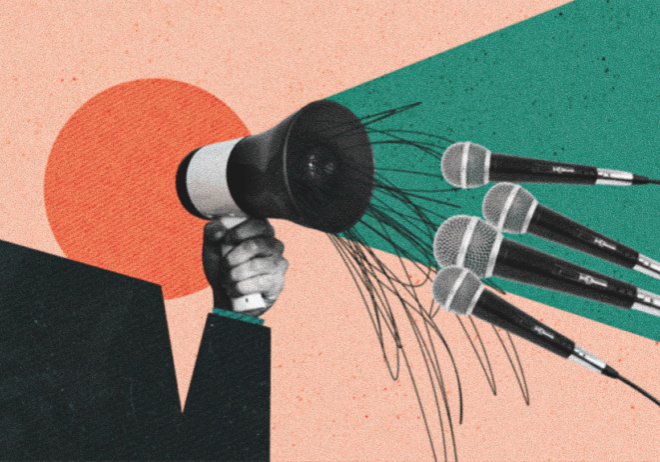
How AI Transforms the Business of Advertising
Have you ever wondered how ads seem to know what you’re thinking? It’s not magic – it’s the power of artificial intelligence in advertising. This technology is not just a passing trend; it’s a game changer, and here’s why it’s important. The market for AI technologies is massive and is projected to exceed $1.8 trillion by 2030. AI is revolutionizing advertising strategies, turning them into powerful tools that engage customers on a whole new level.
In simple terms, AI in advertising serves as a gatekeeper, deciding which ads show up on your screen, how often they appear, and the budget needed to grab the audience’s attention on major ad platforms. For example, Meta’s AI system evaluates the relevance and frequency of your ads to determine their cost and frequency on platforms like Facebook and Instagram.
Understanding how AI is utilized in advertising is crucial in determining the success or failure of your marketing campaigns. Whether you’re a seasoned marketer or just curious, get ready to uncover the role of AI in advertising.
The magic of AI in advertising
At its core, AI brings about unparalleled efficiency and precision to advertising. By processing vast amounts of data and recognizing intricate patterns, AI simplifies the tasks that once required enormous resources and time. This newfound capability allows advertisers to harness insights previously deemed unfathomable.
- Data-driven decisions: Traditional advertising relied heavily on guesswork and broad assumptions. AI changes this by offering deep data analysis inclusive of customer behaviour, demographics, and preferences. Predictive analytics, powered by AI algorithms, enables brands to anticipate trends and adjust their strategies proactively.
- Personalization at scale: Today’s consumers crave personal experiences. AI personalizes advertising campaigns through hyper-targeted messaging that resonates with individual customer needs. Brands can now customize offers, suggest products, and create engaging experiences in real-time, creating an emotional connection with their audience.
- Enhanced creativity: AI tools are transforming the creative process, inspiring marketers and creatives to think outside the box. From dynamic content creation that adapts based on user interaction to AI-generated visuals and videos, technology is breaking down traditional artistic barriers. Imagine an ad campaign that morphs based on a viewer’s sentiment analysis in real-time; it’s a revolutionary approach fueled by artificial intelligence.
- Optimized ad spend: Allocation of advertising budgets has historically been hit-or-miss. AI streamlines this process with advanced tools functioning on sophisticated algorithms. With programmatic advertising, AI ensures that each ad reach has maximum impact without swelling costs, determining the best platforms, timings, and formats instantaneously.
Key components of AI in advertising
To accumulate the benefits of AI, businesses incorporate various AI-driven tools and methodologies that streamline processes and enhance outcomes:
Natural language processing (NLP)
Natural Language Processing, or NLP for short, is the study of how computers can understand human language, making interactions between humans and machines as natural as talking to a friend. It involves teaching computers to not only understand the words we use, but also the emotions and nuances behind them.
In the realm of brands using AI in advertising, this technology is groundbreaking. It allows brands to truly understand how people feel about their products, create messages that resonate on a personal level with individual customers, and ensure that every interaction is meaningful.
Let’s explore how NLP is transforming advertising
Understanding audience Sentiment with sentiment analysis: Picture being able to analyse tweets, online reviews, and posts to gauge the overall sentiment surrounding your brand or products. This is sentiment analysis. It enables businesses to tap into public opinion, adjusting their marketing strategies to align with their audience’s current mood and expectations.
Crafting personalized messages: One of NLP’s most impressive capabilities is generating ad copy, emails, and other marketing content that feels tailor-made for everyone. By analysing past preferences, interactions, and behaviours, NLP can create messages that feel uniquely personalized.
Chatbots: Your 24/7 Digital Assistants: Through NLP, chatbots can respond to customer inquiries on websites and social media platforms in real-time, providing personalized assistance or solutions. They act as helpful assistants available for a chat at any time, enhancing customer service with a more personalized touch.
Machine learning algorithms
Machine learning (ML), a subset of AI, enables systems to learn from experience without requiring explicit programming. It is a game-changer for advertising, as it allows for the analysis of large datasets to identify patterns and enhance prediction accuracy, ultimately improving the efficiency and impact of ads. Here are some ways in which ML can revolutionize advertising:
Audience segmentation: By analysing customer data, ML can identify distinct groups based on behaviours, preferences, and demographics. This enables more targeted advertising.
Dynamic pricing: Have you ever noticed how online prices can change based on demand, competition, and your own shopping habits? That’s ML adjusting prices in real-time to maximize profits while keeping customers satisfied.
Image recognition and computer vision
Computer Vision is a fascinating facet of AI technology that gives machines the ability to understand and make informed decisions based on what they see in images and videos. When it comes to advertising, this technology comes in handy for digging into pictures and video content to unravel what consumers really like and how they behave. This insight is invaluable for tailoring ads that truly resonate with the audience.
Predictive analytics
Predictive analytics can be thought of as the business world’s crystal ball, powered by AI. It is a valuable tool in advertising that allows you to anticipate what customers may be interested in next. This tool enhances your marketing campaigns, helps you allocate your budget effectively, and retains your loyal customers by predicting who may be at risk of leaving. Essentially, predictive analytics uses past data to make informed decisions for future advertising strategies. It is a game-changer for mastering marketing tactics!
Elevator pitch
Gone are the days of marketing ‘to’ consumers; we are entering an age where brands communicate ‘with’ them, amplifying engagement and driving superior results. The enchanted symbiosis of creativity, data, and technology renders the mundane extraordinary in the business of advertising. Clearly, AI is not just transforming advertising; it is elevating it to new and exhilarating heights.

